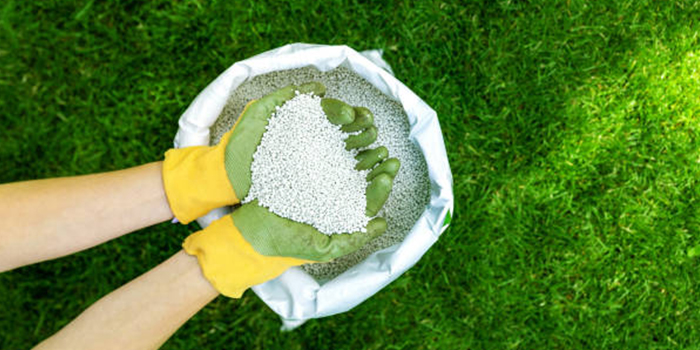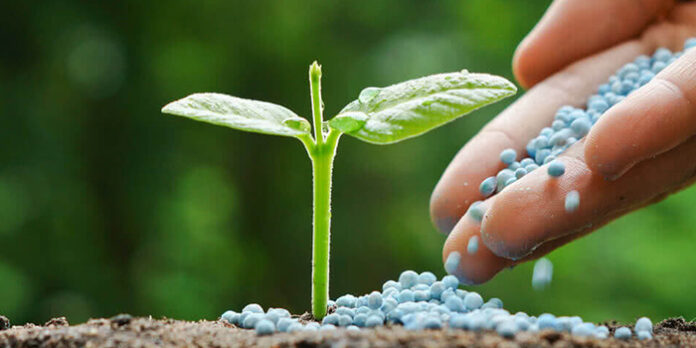Fertilizers are any organic or inorganic, natural or synthetic materials that provide one or more of the chemical components essential for plant growth. Most agricultural fertilizers comprise three fundamental plant nutrients: nitrogen, phosphorus, and potassium.
Cultivation of Field crops dominates the global agricultural landscape, accounting for more than 94.5% of all agricultural areas. Rice, wheat, and corn are the most important field crops cultivated worldwide, accounting for around 37.8% of total agricultural land.
The use of chemical fertilizers has been related to a variety of environmental issues, including water pollution, eutrophication, and greenhouse gas emissions. Biofertilizers are seen as a more environmentally friendly alternative to chemical fertilizers. As a result, several governments have enacted restrictions that limit the use of chemical fertilizers and raise knowledge about the benefits of utilizing biofertilizers. This has boosted the demand for biofertilizers.
Fertilizers made from plants and animals are known as organic fertilizers. Organic fertilizers boost the soil’s nutritional content, encourage microbial development, and alter the physical and chemical composition of the soil. Organic fertilizers can be made from the following materials: industrial waste, municipal sludge, livestock manure, and agricultural waste. Chemical fertilizers or “inorganic fertilizers” are produced using chemical processes and contain nutrients for crop growth. Fertilizers containing nitrogen and phosphate are found in inorganic fertilizers.
Advantages of fertilizers
Plants absorb fertilizers very quickly. Fertilizers can assist enhance crop yield by giving plants the nutrients required to grow and restoring soil fertility. This is especially significant in locations where the soil is deficient in nutrients. These fertilizers strengthen their resistance to pests and illnesses. It can help farmers enhance their earnings by enhancing crop output and quality.
Drivers of fertilizers
Horticultural crops are mostly grown in poor countries, particularly in the Asia Pacific. Turf and ornamentals constitute the smallest segment of the fertilizer, followed by horticultural crops. Fertilizers are designed to meet the nutrient requirements of horticulture crops, forests, and other fields in order to boost yield and quality. Fertilizers are commonly used to maintain and improve the appearance of lawns, golf courses, sports fields, and public parks. They provide important nutrients to grass and other plants, resulting in lush, nutritious green spaces.
Growth Opportunities
With the rising population, the demand for food products is rising day by day and it is important to cater the food yields. Fusarium wilt, Verticillium wilt, Early blight, Rust, and others are a few fungal diseases that cause wilting and death of plants. These diseases can affect a wide variety of crops, including tomatoes, potatoes, and bananas. It can be difficult to control, but it can be managed use of fertilizers high in nitrogen, phosphorus which can help to improve the health of plants and make them more resistant to fusarium wilt. Therefore, rising awareness of the potential benefits of fertilizers has driven the use of fertilizers in agriculture.
Regional analysis
Asia Pacific is the largest market for fertilizers accounting for over 41% of the global market. China is the largest exporter and producer of fertilizers in the world. As an agrarian country, India is the second largest consumer and third largest producers of agricultural fertilizers in the world still India is dependent on imports of raw materials. A rising population of India, China, and other countries has driven to increase the demand for food production in the region.
Europe is the second largest market for fertilizers, where Russia Becomes India’s Largest Supplier of Mineral Fertilizers in 2023. One of the major consumers of fertilizer in Europe is France. The use of specialty fertilizers will expand as new agricultural practices are used. The growth of the fertilizer market in Europe is driven by the increasing demand for organic fertilizers in the region.
North America is the third largest market for fertilizers, accounting for over 15% of the global market. The United States is the region’s leading market, accounting for nearly 82% of the total fertilizer market value in 2021 and occupying around 73.3% of North American agricultural land. The growth of the fertilizer market in North America is driven by the increasing demand for corn and soybean production in the region.
South America is having sustainable growth in the past few years. The market for fertilizers in South America was dominated by field crops. Corn, sugarcane, and soybeans are the top three crops farmed in South America.

Recent Developments
In May 2023 Yara International announced the construction of a new worldwide production unit for specialty fertilizers and biostimulants with the goal of increasing yields and improving quality. The plant will be among the biggest in the world, which is critical for food security and mitigating climate change.
In 2023 CF Industries and CHS Inc. are working together to produce and distribute low-carbon nitrogen fertilizer. In order to hasten the quantifiable and verifiable reductions in greenhouse gas (GHG) emissions from agriculture and the food system,
In 2022 ICL unveils cutting-edge biodegradable coated fertilizer technology. In a new era of controlled release urea, ICL introduces eqo.x, a novel fast biodegradable release technology created for open-field agriculture. This innovative approach is made possible by a coating, which will help farmers optimize their agricultural crop performance while minimizing environmental effects by minimizing nutrient loss.
